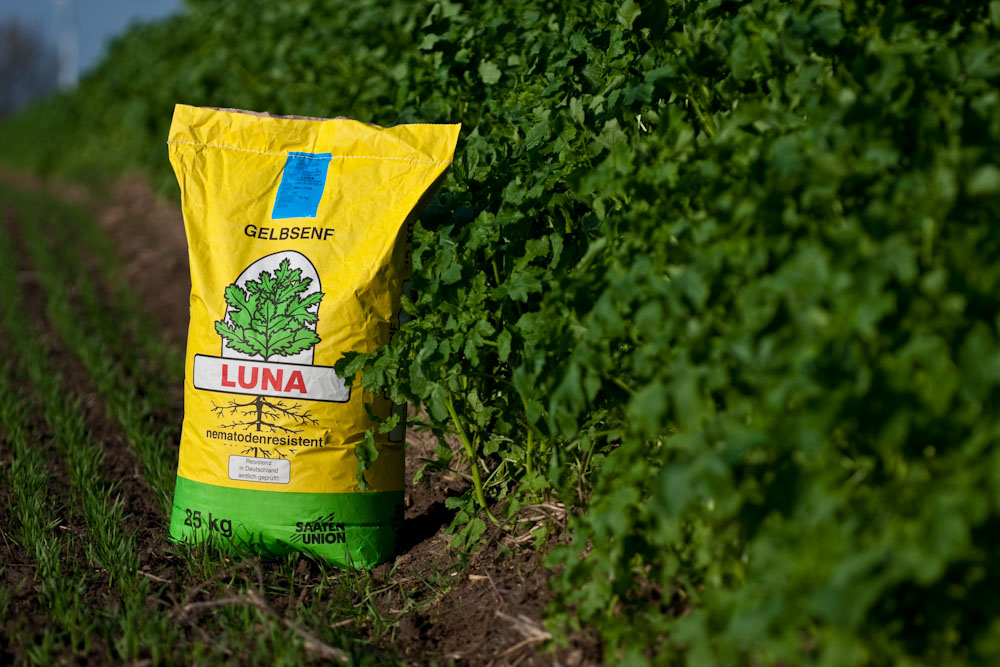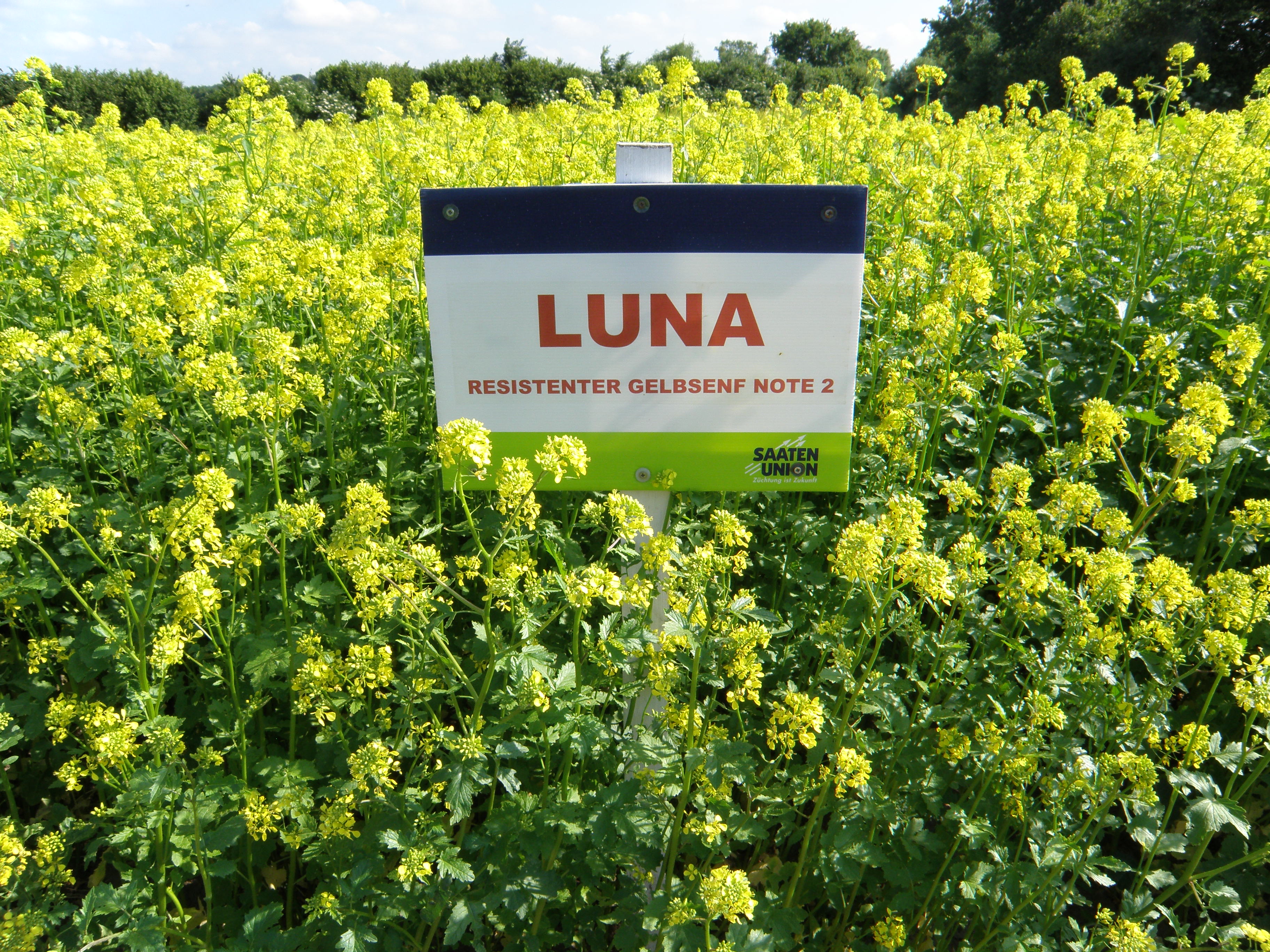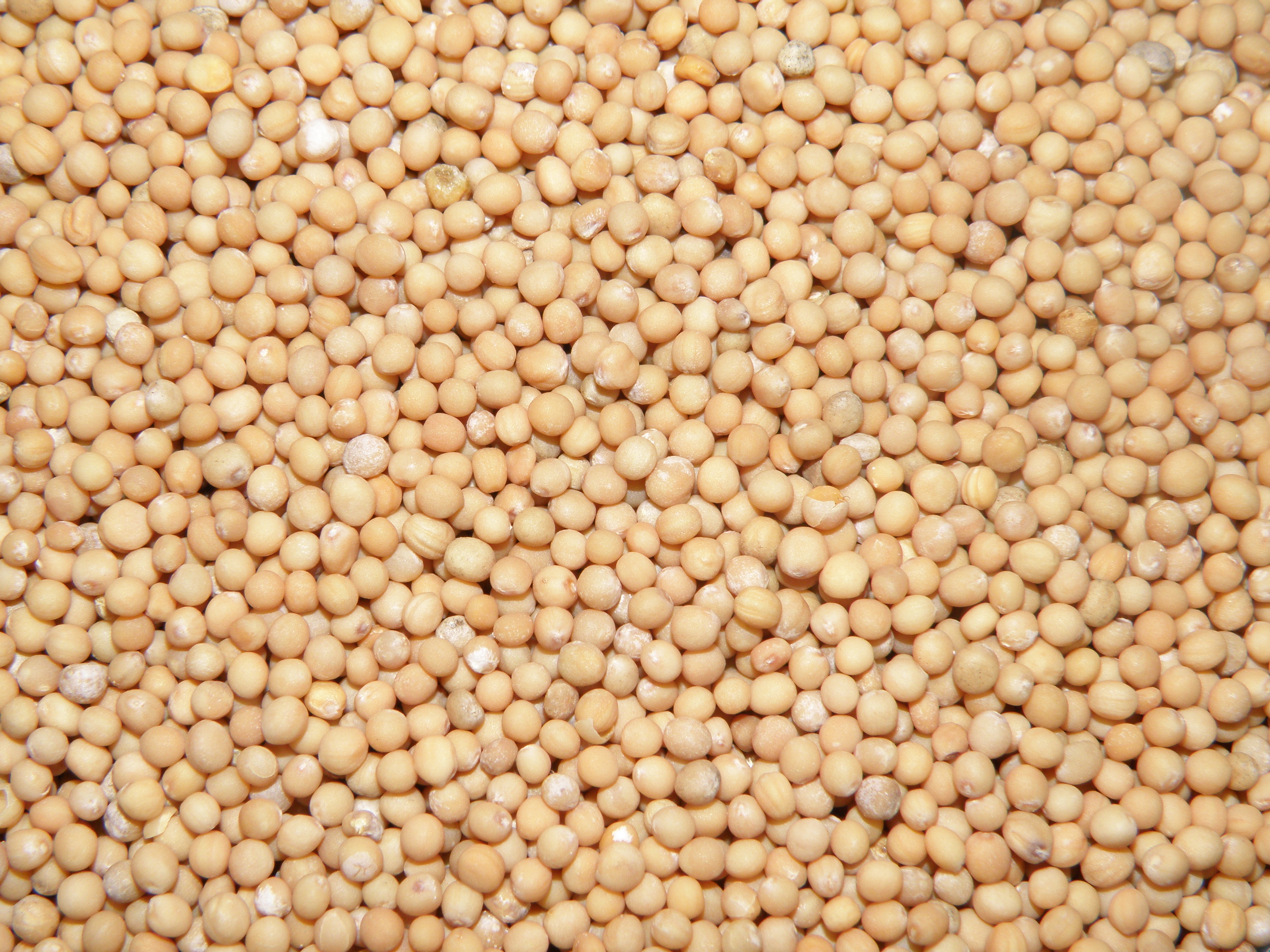International
Catch crops
LUNA Nematode resistant White mustard White mustard
Advantages
Reliable high quality white mustard
Name addition
Nematode resistant White mustard
- High Beet Cyst Nematode resistance in the upper range of resistance level 2
- LUNA uses the remaining residual warmth in the soil for an effective nematode control
- Fast initial development allows cultivation after late-harvesting pre-crop (e.g., wheat)
- Freezes off safely during winter, suitable for mulching and direct sowing in spring
General description
General description
| - - - - | - - - | - - | - | 0 | + | + + | + + + | + + + + |
---- = very low resistance/early/short, ++++ = very high resistance/late/long
Classification Bundessortenamt
Resistance against Heterodera schachtii
Resistance level 2
Initial mass formation









Tendency to flower









Stiffness









Agronomic features
Weed suppression









Protection against erosion









Ground water protection / Nitrogen conservation









Humus formation









Cold- and frost resistance









Drought tolerance









Type of root
Tuft root with strong main root
Rooting depth
120 cm
Breeder
P.H. Petersen Saatzucht Lundsgaard GmbH
All variety descriptions have been prepared in accordance to the best of our knowledge, considering trial results and observations. A guarantee or a liability in individual cases is not possible, because the growth conditions are subject to substantial fluctuations.
Cultivation
Crop rotation suitability
Maize
++
Cereals
++
Oilseed rape
Sugar beets
++
Potatoes
Intensive crops
Legumes
++
Cultivation recommendations
Recommended sowing rate
20 - 25 kg/ha
Sowing depth
1 - 2 cm
Sowing period
August until September - depending on location! Early sowing increases control success
Fertilization
40 - 60 kg N/ha
Crop protection
Usually there is no crop protection required
Sowing method
Low requirements regarding sowing method: spreader or seed drilling
Breeder
P.H. Petersen Saatzucht Lundsgaard GmbH
All variety descriptions have been prepared in accordance to the best of our knowledge, considering trial results and observations. A guarantee or a liability in individual cases is not possible, because the growth conditions are subject to substantial fluctuations.




